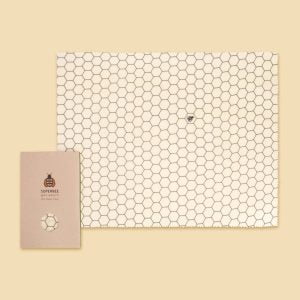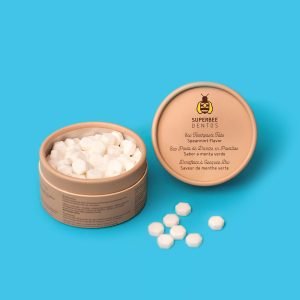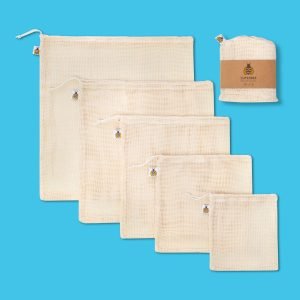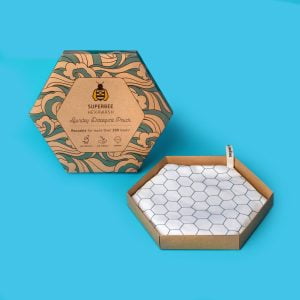Non-Toxic Laundry Detergents: How to Choose the Safest For Your Family
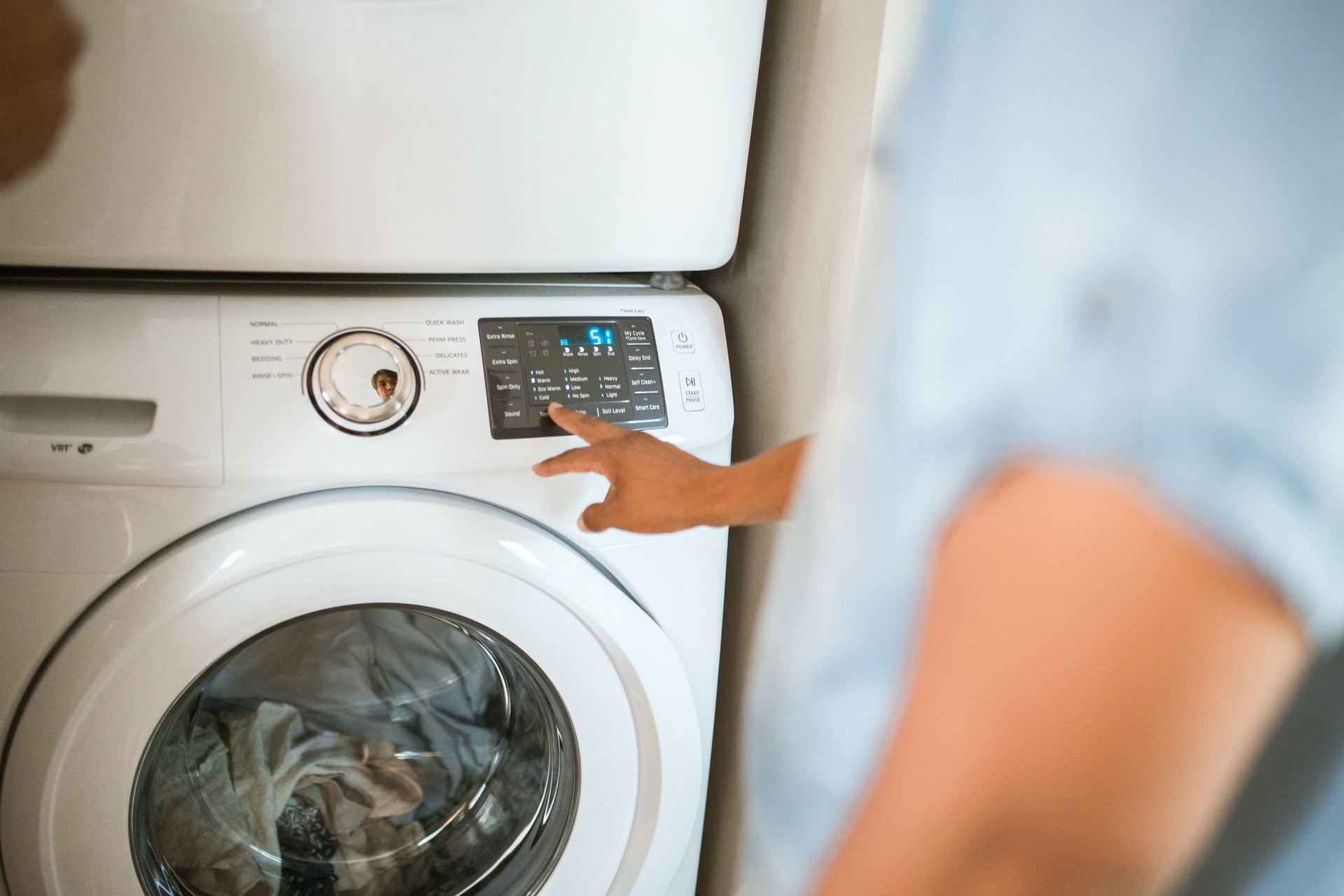
Want your clothes to come out of the wash looking brand-new but concerned about how toxic your laundry detergent might be? If you’ve ever had an allergic reaction after changing your washing detergent, then you might be worrying about which ingredients are actually in the liquid or powder you use to wash your clothes. And, with washing machines contributing to a quarter of household wastewater, you might also wonder exactly what chemicals you’re sending down your drain and out into our oceans.
Is it time to start being more careful about the types of laundry detergents we use? We think so. Unless a laundry detergent is marked as 100% plant-based and biodegradable, then it’s likely using synthetic chemicals, including phosphates, petrochemicals and artificial fragrances, which can pose a risk to your family’s skin. Many of the chemicals used in laundry detergents also don’t readily biodegrade, which means they can contaminate waterways and be toxic to fish and other marine life.
So whether you’re concerned about the environmental effects of a potentially toxic laundry detergent, or its impact on you or your baby’s skin, these 10 things to consider before investing in a non-toxic laundry detergent should guide your next purchase.
1. Say no to optical brighteners
You’ve probably never heard of optical brighteners, but you’ve definitely come into contact with them. They’re used in most laundry detergents as a way of making your laundry seem whiter, without actually making it any cleaner. They transform UV (ultraviolet light) waves, enhancing the blue light and minimizing the yellow light so that your whites seem whiter. But they don’t ever actually make any difference to the cleanness of your clothes.

Aside from their negligible use in your laundry detergent, there are two main issues with optical brighteners: firstly, they’re non-biodegradable, meaning they don’t naturally break down when released back into the environment and can therefore cause damage when entering waterways. Secondly, they’re one of the main offenders when it comes to skin sensitivity and allergic reactions, so could be to blame when you break out with a nasty rash after wearing your favorite — and newly laundered — t-shirt.
Luckily, they’re normally identified as optical brighteners on the ingredients list, so it can be relatively easy to opt for a more eco-friendly detergent that doesn’t use these chemicals. If not, look out for aminotriazine- or stilbene-based whiteners and avoid them at all costs.
2. Steer clear of skin-irritating fragrances
One of the best parts about doing the laundry is the freshly washed smell emanating from your linens. But have you ever wondered what chemicals go into creating scents that are supposed to imitate “natural” smells?
Typically, it’s a whole cocktail of chemicals that is used to create a certain scent. And, if you’ve got sensitive skin, have young children or just want to check you’re not allergic to the chemicals being used, you’ll want to know exactly what these are. However, because scents in laundry detergents are considered proprietary, their ingredients legally don’t have to be included in the label. As a result, they can be comprised of dozens of different chemicals that can be toxic or allergenic — and you’ll be none the wiser.
Fragrances in laundry detergent are another key culprit for causing skin irritation, leading to itching, rashes and even contact dermatitis. So if you’re having an issue with your current detergent, the scent could well be to blame.

As a result, it’s always best to choose an unscented laundry detergent and steer clear of fabric softeners, too. This doesn’t mean you have to miss out on that “just-washed smell”; instead, dry your clothing naturally on a line outside for the original meadow fresh scent. Alternatively, use natural wool dryer balls with a few drops of your favorite (and non-toxic!) essential oils in your tumble dryer for a safe alternative to using skin-irritating fabric softeners.
3. And artificial colorants
Synthetic laundry detergents aren’t naturally colorful. No: this requires more chemicals to add in the blues, greens or bright whites you find in your detergent. And, guess what? Not only are these colorants non-biodegradable (meaning they stay within the environment indefinitely), but they can also cause irritation to the skin and eyes of both humans and animals. And while there’s little evidence to suggest they’re carcinogenic, they don’t actually serve any purpose whatsoever, except to look nice. What a waste!
Organic, natural laundry detergents typically don’t use colorants, so look for these instead.
4. Biological detergent might be making you itch
Ever wondered what the difference is between a biological and non-biological detergent? Biological detergents contain enzymes, which are used to break down fats and protein molecules, such as those found in oil, blood and egg stains.
While these enzymes are great for removing tough stains, they’re not the best for people with sensitive skin. While they aren’t exactly toxic, they could well leave you with a nasty rash.
To protect your skin, switch to a non-bio detergent instead; while these do require slightly warmer washing temperatures, they’re much kinder to the skin.
5. Avoid petrochemicals for their environmental impact
Ever wondered what impact the wastewater from your washing machine is having on the environment? You can be sure it’s not a good one.
One of the major issues is the fact that most laundry detergents are packed full of petrochemicals. These are chemical compounds made from petroleum (aka crude oil) that have various different roles during the washing process. One of the main ones is as a surfactant, which is used to remove grease and dirt from an item by emulsifying oils and then dispersing them away from the material so that they don’t settle back on the surface. You’ll also find petrochemicals being used for coloring and synthetic perfumes.

While perfectly safe for human health, petrochemicals are very damaging to the environment. The process of making petrochemicals leads to the release of poisonous gases such as carbon monoxide and contaminated wastewater that contains toxic sulfides and ammonia that can be damaging to marine – and ultimately human – life. Surfactants are also toxic to aquatic life as they change the chemical composition of rivers and make it easier for the life within to absorb pesticides and other pollutants.
These potentially toxic chemicals found in laundry detergents should be easy to avoid, right? Wrong. Part of the issue with choosing laundry detergents that don’t use petrochemicals is that they go by so many different names, including trade names that are unrecognizable, making it incredibly difficult to identify them in laundry detergents.
Opting for a 100% natural detergent is one of the easiest ways of removing these harmful chemicals from your washing machine and a low-effort way of being more sustainable at home.
6. Sodium Lauryl Sulfate (SLS) and Sodium Laureth Sulfate (SLES)
While there are plenty of urban legends surrounding Sodium Lauryl Sulfate (SLS) and Sodium Laureth Sulfate (SLES) (the milder and less skin-irritating form), there’s zero scientific proof to suggest that it isn’t safe to use in laundry detergents. SLS and SLES are surfactants used to lower the surface tension of the water and help increase the efficiency of cleaning; however, they can cause irritation, particularly in people with sensitive skin.
SLS and SLES are found in everything from skin cleansers to shampoos, as well as laundry detergents, and the real problem comes from when they spend extended periods of time in contact with your skin. Theoretically, your washing machine should remove them from your clothes to prevent this from happening — but, given 2.5% of our laundry detergent remains on our clothes after they’ve been washed, it’s another reason you might find your laundry is causing you to itch.

What’s more, many products that use SLS and SLES are tested on animals before being used in commercial products. If you’re a vegan, or just against animal testing, then you’ll want to avoid all detergents that mention SLS or SLES in their ingredients list.
7. Don’t be fooled by surfactants made from vegetable oils
While some eco-friendly laundry detergent companies have swapped out surfactants made from petrochemicals for those made from vegetable oils, the trade-off isn’t necessarily one that’s much better for the environment.
The issue is, many vegetable oils used in laundry detergents have been derived from oil palm trees. Palm oil is a ubiquitous ingredient found in everything from pizza to lipstick and whose high demand combined with unsustainable growing practices across the palm oil industry is driving deforestation in rainforests around the globe.
As a result, it’s far more environmentally sound and sustainable to choose a surfactant-free laundry detergent.
8. Steer clear of phosphates and polycarboxylates
You may well have heard of phosphates; they hit the headlines back in 2014 when industry leader Procter & Gamble, began eliminating these chemicals from their laundry detergents. While useful for softening hard water, phosphates are extremely damaging to the environment, causing algae blooms and low oxygen levels that can cause large-scale fish and other marine animal deaths.
Luckily, laundry detergents (at least in some parts of the United States) are now phosphate-free, with most of the major detergent companies opting to remove them back in 1994. However, they’ve since been replaced with polycarboxylates, a non-biodegradable and petroleum-based chemical that, like all petrochemicals, is contributing to global warming. To avoid polycarboxylates, look for 100% natural detergents.
9. Beware of detergent pods, too
Detergent pods might look good, but their environmental impact is anything but. PVA, or polyvinyl alcohol, is used to make these pods, which release just the right amount of detergent into your wash each time.
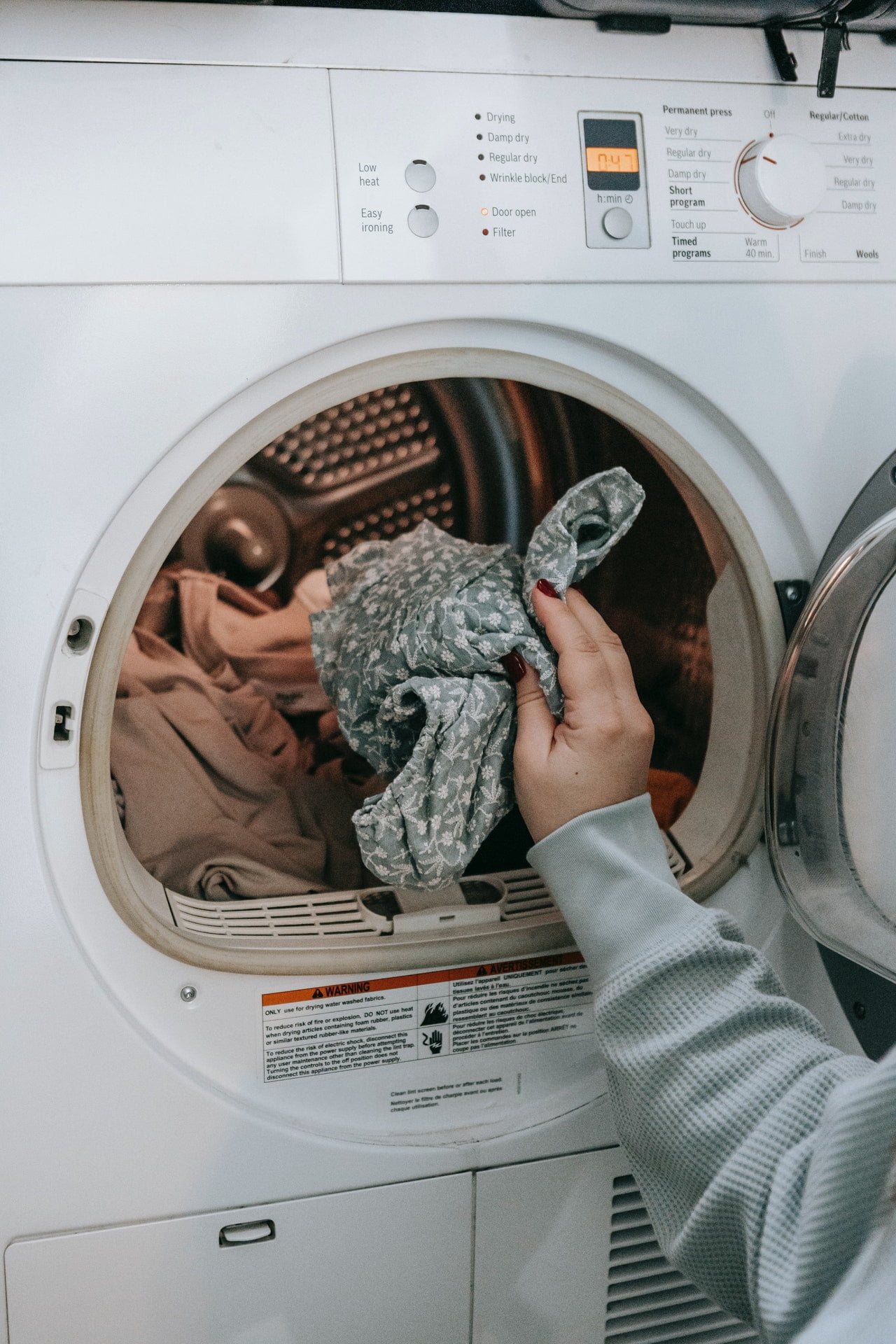
The issue is, that while PVA is theoretically biodegradable, it needs certain conditions to actually do this — conditions that are not typically found in the wastewater plants found across the United States. Instead, when these pods meet water, they turn into a plastic solution that can then pass through wastewater treatment and into our waterways.
Liquid or powder detergents, particularly those that come in recyclable plastic containers or plastic-free packaging, can help you avoid releasing any more plastic into the world.
10. Don’t go anywhere near 1,4-Dioxane
In 2012, The New York Times reported on a scandal involving 1,4-dioxane, a toxic chemical found in laundry detergent and other cleaning products that is known to be an allergen and also linked to cancer. One of the reasons it hit the headline is because two products from detergent company Tide (made by Procter & Gamble) contained concentrations of 1,4-dioxane that were significantly higher than what was considered safe by the Department of Health and Human Services.
Because the ingredients listed on laundry detergents are rarely complete, it’s extremely hard to know whether companies are still using 1,4-dioxane and in what quantities. This is another toxic chemical used in detergents that you’ll unlikely be able to identify before you buy.
What can I use instead of laundry detergent?
As we’ve seen, trying to identify exactly which toxic ingredients are found in your normal laundry detergent can feel like an uphill battle. It’s for this reason that many consumers are instead opting to use one of the 100% biodegradable and plant-based detergents that are available. These eco-friendly alternatives work just as well as their synthetic counterparts, but without the nasty environmental impacts or the irritation to your skin. They’re also the safest detergents for baby’s clothing as they don’t contain any chemicals that could be harmful to their sensitive skin.
Our favorite is Hexawash, our own organic laundry detergent substitute that uses magnesium — a naturally occurring mineral — rather than harsh chemicals to clean laundry. It’s hard to believe that an organic cotton pouch filled with just 120 grams of magnesium pellets can pack quite this degree of cleaning power, but it’s down to a nifty bit of science that means this fully biodegradable detergent (the pouch and magnesium pellets can be home composted at the end of their life) cleans just as well as any mainstream detergents.

It also lasts for an incredible 300 washes, making it hugely economical, with each load of washing costing just 16 cents. Dye and fragrance-free, Hexawash is ideal for all the family and, because it’s package-free and therefore contains absolutely zero plastic, it’s one of the most sustainable and eco-friendly laundry products available.
FAQs About Non-Toxic Laundry Detergents
Which laundry detergent is the most toxic?
In 2012, the American environmental group Women’s Voices for the Earth, based in Missoula, Montana, discovered that Tide Original Scent Liquid Laundry Detergent and Tide Free & Gentle Liquid Laundry Detergent (detergents made by industry leader Procter & Gamble) contained concentrations of the carcinogenic chemical 1,4-dioxane that were significantly higher than what was considered safe by the Department of Health and Human Services. Unfortunately, it remains very difficult to know the quantities of this chemical still being used today in laundry detergents as it is rarely marked on the ingredients list.
What is the safest laundry detergent for your skin?
If you’ve got sensitive skin, the safest laundry detergent is a non-allergenic, non-biological, unscented, and color-free detergent. Synthetic fragrances, the enzymes used in biological washing detergent, and harsh surfactants such as Sodium Lauryl Sulfate (SLS) and Sodium Laureth Sulfate (SLES), can cause itchy skin and allergic reactions, so opting for an organic, 100% natural detergent is far safer.
Do natural laundry detergents work?
Yes! Natural laundry detergents use similar chemistry to pull away dirt and stains from clothes as traditional detergents. For example, the Hexawash organic natural laundry detergent alternative uses magnesium pellets, which, when mixed with water, create hydrogen gas and magnesium hydroxide. These negative ions naturally reduce the surface tension of the water (just like synthetic surfactants found in mainstream detergents) to help lift dirt and oil from your clothes. Because Hexawash and other natural laundry detergents are 100% plant-based, they’re also fully biodegradable and don’t release damaging chemicals into our waterways or the oceans. Want to learn more? Visit our FAQ page!
